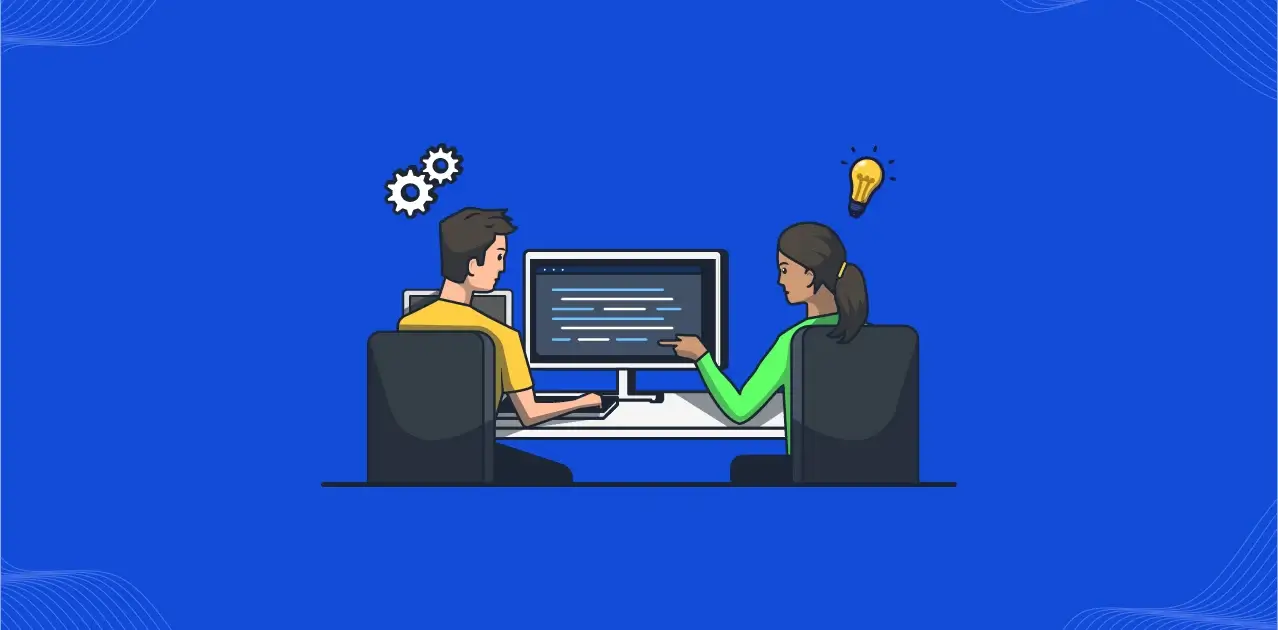
Learn more about what building in maritime looks like as we build in public.

Tham Shi Yuan
Published on 15th Mar 2023
4 minutes read
The best products are almost invisible, allowing users to effortlessly do what they need to without thinking about the systems they’re interacting with. Yet behind each frictionless action are invisible depths: thousands upon thousands of hours of research & development, sales & marketing, and the cumulative work of a team.

We want to shine a light on the people powering the Greywing mission in this new series of Meet the Team interviews. In this first conversation, software engineer Shi Yuan shared the importance of building systems that can scale for uncertainty, the interesting challenges that come from working at a nexus of different solutions, and the untapped opportunities in maritime tech that are ripe for technological innovation.
Before joining Greywing, Shi Yuan was a software engineering generalist so brought a fairly big picture approach to the team. When thinking about the challenges for developing maritimetech, he reflected that really “all companies face the same challenge: build quick and dirty, or take the time to organise so building on top is easier in future.” This tension between short-term gains and long-term investment is not an easy one: “it’s hard to build something quickly that’s neat enough to build on top of in future.” No matter the industry, software engineers are generally united in focusing on building effectively, while maintaining high standards to deliver usable products. “You’ve got to think about accuracy: does the UI work when I click this button? Is the server doing what it’s meant to? Is the data being saved in the right format?”
While maritimetech shares this challenge with its peers in other industries, Shi Yuan thinks there’s a layer of consideration missing when thinking about quality code. “We need to build with the specifications we have today, but in an organized way that we can adapt to changing tools or standards in future,” he reflected, adding that: “focusing on the modularity or neatness of the code is often overlooked.”
As maritimetech continues to develop at a considered pace, we have an opportunity to set a new standard in quality development practices that could make future iterations easier. Given the sheer complexity of some maritime interactions, this could save thousands of dollars and hours of building time for complex projects, such as logistics management.
Getting into the challenges of engineering logistics solutions that integrate multiple data types from a multitude of sources has been one of Shi Yuan’s most interesting challenges in entering the maritimetech space. Greywing “wants to get crew changes right” but it’s a lot more complicated than it sounds on paper.
“You’ve got some people to offboard, and then some people to onboard,” Shi Yuan laid out. To plan a crew change, “you have to find the best place for crew members to swap, based on the ports on the route, and the flight prices.” Underneath this exchange are multiple different logistics systems: transport providers, ticketing agencies, and so on. The challenges “are not so much in building a solution to this problem - it’s more about understanding the industry, where to get information from, and how to best use that information.”
So how does a generalist software engineer submerge themselves in the nuances of the maritime industry? “It’s really fun to work with people who are excited to build,” Shi Yuan reflected. “It’s genuinely interesting, learning how all these different industries work, and developing technologies to try to meet their needs.” Being interested in the problems he was solving at work was important to Shi Yuan in his job search; though he lacked maritime expertise, he enjoys working alongside domain experts: “at Greywing, everyone really wants to get the product right… everyone is really approachable and easy to talk to; they really want to invest their time in you.” Yet as maritimetech continues to develop as an emerging industry, there’s still plenty more challenges in need of solutions.
The maritime sector is slowly embarking on an innovation revolution, but there’s still a bit of a gap when you compare the technology to more mainstream technologies, like fintech or medtech. As Shi Yuan reflected: “I think shipping didn’t get as much love until lately.” But this poses an interesting challenge for engineers: “I feel there’s still a lot of room to get good software out in the industry; there are still plenty of new problems to be solved… I think that’s kind of fun.”
When considering how to get more engineering talent to look at maritime’s innovation opportunities, Shi Yuan recommended that maritime starts “to be more open about their processes; as it’s very hard for someone with no expertise to address industries they don’t know about … where do you even begin?” By bringing together driven domain experts with software engineering talent, Shi Yuan can see huge potential opportunities for good software that can help “overcome the hurdles facing legacy industries.”
While shipping remains a fairly overlooked component of most people’s daily lives, powering the supply chain that stocks global markets, there’s still plenty of space for interested innovators to dive in and tackle some exciting challenges and develop software in an as-yet-uncrowded playing field.
Want to stay updated on all things AI we're building for Maritime? Sign up to our monthly newsletter here.

We release every week.
Learn about new tech in maritime, and what we've built as soon as it's live.